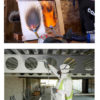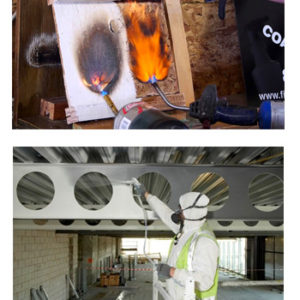Passive Fire Protection (PFP)
Passive fire protection (PFP) is an integral component of the components of structural fire protection and fire safety in a building. PFP attempts to contain fires or slow the spread, such as by fire-resistant walls, floors, and doors. PFP systems must comply with the associated listing and approval use and compliance in order to provide the effectiveness expected by building codes.
Description
Passive fire protection (PFP) is an integral component of the components of structural fire protection and fire safety in a building. PFP attempts to contain fires or slow the spread, such as by fire-resistant walls, floors, and doors. PFP systems must comply with the associated listing and approval use and compliance in order to provide the effectiveness expected by building codes.


Structural fire protection – Fire protection in a building, offshore facility, or a ship is a system that includes:
Active fire protection can include manual or automatic fire detection and fire suppression. Passive fire protection includes the compartmentalization of the overall building through the use of fire-resistance-rated walls and floors. Organization into smaller fire compartments, consisting of one or more rooms or floors, prevents or slows the spread of fire from the room of fire origin to other building spaces, limiting building damage and providing more time to the building occupants for emergency evacuation or to reach an area of refuge.
Fire prevention includes minimizing ignition sources, as well as educating the occupants and operators of the facility, ship or structure concerning operation and maintenance of fire-related systems for correct function, and emergency procedures including notification for fire service response and emergency evacuation.




Reviews
There are no reviews yet.